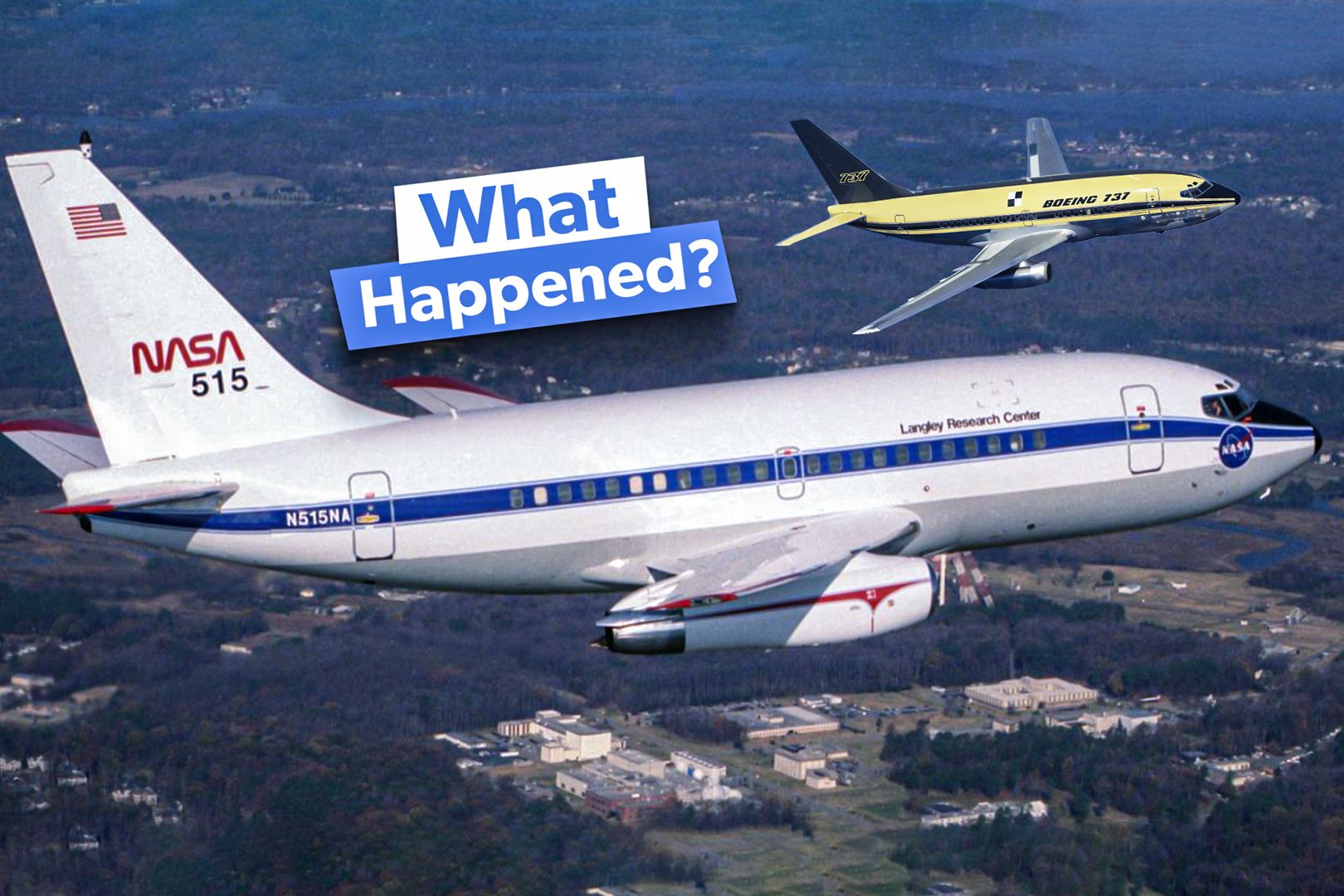Summary The Boeing 737-130, the first ever built, revolutionized aviation. NASA acquired the first airframe it for research, contributed to fly-by-wire tech. Preserved at the Museum of Flight as a symbol of aviation innovation.
The Boeing 737, an aircraft synonymous with air travel, holds a remarkable place in aviation history. Among the many 737s that grace the skies, one particular aircraft stands out: the very first Boeing 737 ever built, bearing the tail number N515NA. According to This Day In Aviation , this pioneering jet, a Boeing 737 130, played a crucial role in developing the world's most popular commercial aircraft.

However, the journey was anything but ordinary. The birth of a legacy: The Boeing 737-130 In the early 1960s, Boeing recognized the need for a smaller, short-haul aircraft to complement its highly successful 707 and 727 models . The result was the Boeing 737, designed to cater to the burgeoning demand for short- and medium-range airliners.
Photo: TheAirchive The prototype, serial number 19437, rolled off the production line on December 17, 1966, and was registered as N515NA. This aircraft, designated as the Boeing 737-130, was the first of its kind, representing the dawn of a new era in aviation. The initial flight of N515NA took place on April 9, 1967.
Piloted by Boeing's Chief Test Pilot Brien Wygle, the flight began an extensive test program to certify the 737 for commercial service. The aircraft underwent rigorous testing over the next few months, including various performance evaluations and system checks. By December 15, 1967, the 737 received its certification from the Federal Aviation Administration (FAA), paving the way for its entry into the commercial market.
NASA and the 737 Following its certification, the first Boeing 737-130 did not enter commercial service as one might expect. Instead, NASA acquired it in 1973, marking the beginning of a new and significant chapter in its life. NASA had been searching for an aircraft to serve as a flying laboratory for various research purposes.
The 737, with its relatively small size and advanced systems, was deemed ideal for the job. The CATBird performed its first flight in January 2007. Renamed NASA 515, the aircraft was extensively modified for its new role.
NASA used the aircraft primarily for digital fly-by-wire (DFBW) research, a groundbreaking technology that would later become standard in modern aircraft. The 737-130's contribution to the DFBW program was invaluable, allowing NASA to develop and test the system in real-world flight conditions. For the latest aviation news snippets, follow Simple Flying on Instagram! Over the years, NASA 515 participated in numerous other research projects, including developing wind shear detection systems, advanced avionics, and various flight control technologies.
The aircraft served as a testbed for innovations that would enhance the safety and efficiency of future generations of aircraft. Numerous ex-commercial aircraft have, over the years, become test beds for NASA. And some, interestingly enough, can also be purchased.
The final flight and preservation efforts According to Rbogash , after nearly three decades of service with NASA, during which it significantly contributed to advancements in aviation technology, the time came for NASA 515 to retire. The aircraft's final flight took place on September 3, 2003. This marked the end of a remarkable journey that had begun nearly 40 years earlier with its first flight as a prototype.
If you look at the underside of the Boeing 737 shortly after takeoff or in flight, you will see that the main landing gear wheels sit exposed. However, the story of N515NA did not end with its retirement. Recognizing its historical significance, efforts were made to preserve the aircraft.
The Museum of Flight in Seattle, Washington, took an active interest in the 737-130, aiming to restore it and display it as a tribute to its pioneering role in aviation history. Stored at the Museum of Flight Today, the first Boeing 737 ever built is proudly displayed at the Museum of Flight, where it serves as a tangible link to the early days of jet aviation. The aircraft's restoration was a labor of love, involving the meticulous work of many dedicated individuals who recognized the importance of preserving this piece of history.
Visitors to the Museum of Flight can see N515NA up close, gaining a unique perspective on the evolution of commercial aviation. The aircraft is displayed in its NASA livery, a testament to its significant contributions to aerospace research. For those who appreciate the history of aviation, seeing the first Boeing 737 is a powerful reminder of the technological advancements that have shaped the industry.
According to the Museum of Flight, here are some of the other aircraft that can be seen in the exposition: Boeing 247D Boeing 727-100 Boeing 737-130 Boeing 747-121 Dreamliner 787 Boeing 80A1 Boeing B-29 Boeing model 40B (modern reproduction) A Pioneer that will never be forgotten The story of the first Boeing 737 ever built, N515NA, is one of innovation, exploration, and legacy. From its early days as a prototype to its years of service with NASA, this aircraft played a pivotal role in shaping the future of aviation. Today, as it stands proudly in the Museum of Flight, it serves as a reminder of the incredible advancements made over the past few decades.
Its journey from the Boeing production line to NASA's research laboratories and finally to its place of honor in a museum is a testament to the impact of this pioneering aircraft on the world of aviation. The 737 has become the most successful commercial jetliner in history, with over 10,000 units worldwide produced and operated by airlines..



















